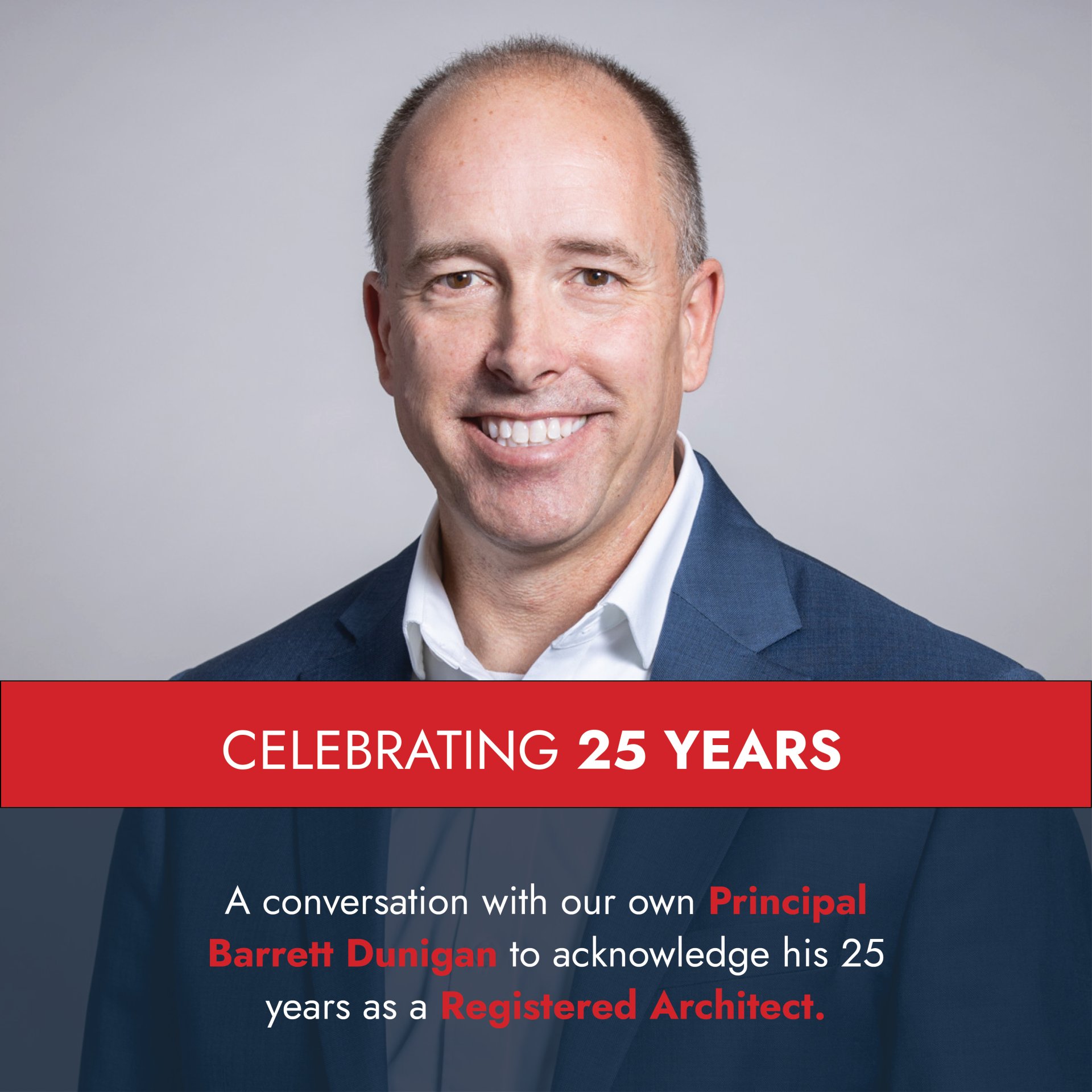Celebrating 25 Years as a Registered Architect: A Conversation with Barrett Dunigan
October 31st, 2025

This year, Halyard Principal Barrett Dunigan is celebrating 25 years as a Registered Architect, a milestone that reflects a varied career that bridges architecture, construction, and project management.
Barrett’s path to licensure was anything but linear. Yet, that blend of experience has given him a unique lens through which to view the construction programs Halyard helps manage today. To mark this milestone, we sat down with Barrett to talk about how his architectural background continues to influence his work and the lessons he’s gathered along the way.
What first inspired you to pursue architecture?
In high school, I wasn’t totally sure what I wanted to study in college. I liked computers and thought I might go into computer engineering. When I looked into it, I realized I was drawn to the hardware side—how computers are designed. But back in the ’80s, there weren’t many programs that focused on that. Most schools offered computer science or electrical engineering.
I started out at the University of Hartford but found myself wanting something more hands-on and creative. I grew up with a hammer in my hand. My grandfather encouraged me to build, take things apart, and build again. I also loved to draw. Eventually, I realized architecture combined all those interests: creativity, design, and building. I transferred to Temple University and pursued architecture there.
At what point did you decide to move over to the construction side of the industry?
When I was working in architecture, one of my favorite parts of the job was being out in the field—seeing how things were built and helping contractors understand the “why” behind our designs. That interaction between design intent and real-world construction really fascinated me.
Over time, I realized that what I enjoyed most was bridging that gap—helping translate design concepts into something buildable and functional. Working on the construction side, I learned more from the Project Superintendents than anyone else. They were the ones who orchestrated the projects and knew how to build them. Now that I’ve worked on both sides, I often tell friends and colleagues that one of the best ways to grow as an architect is to work for a construction management firm. If you’re going to design something, you should understand how it’s actually built. That perspective makes you a better designer and a better collaborator.
Your career has spanned architecture, construction, and project management. How has your architectural background shaped the way you manage construction projects today?
Honestly, I’ve used my architecture degree almost every day since graduating. Having experience on both the design and construction sides—and now working as a consultant helping clients manage their construction programs—gives me a broad understanding of the entire process. I know how to manage architectural teams during construction, keep communication flowing between all parties, and make sure decisions are made in the client’s best interest. That foundation helps me anticipate issues before they arise and guide clients toward feasible, effective solutions. Ultimately, my background allows me to think a few steps ahead—helping clients understand their options, evaluate what’s realistic, and make confident decisions that move their projects forward.





